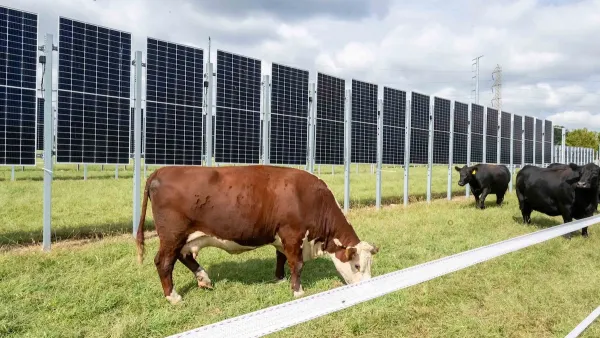Farm land ownership matters on the edges of metropolitan areas, where farmers can find lucrative markets for their products and yet, with ever escalating land prices, face daunting odds in securing land to grow on or even to get started.
By David Holtzman
I have thought a lot lately about the issue of land ownership for farmers, and the barriers they face to buying land so they can plan for growing their business and serving more food consumers.
This issue really matters on the edges of metropolitan areas, where farmers can find lucrative markets for their products and yet, with ever escalating land prices, face daunting odds in securing land to grow on or even to get started. Many farmers settle for a lease instead, which sometimes only lasts a couple years before the relationship between owner and farmer sours.
It's interesting to see that control of land for farming is an issue in urban agriculture, as well. At a recent farming conference in Richmond, Va., a board member of the Urban Agriculture Collective of Charlottesville [UACC] talked about a city-sponsored plan to redevelop her neighborhood, which would include relocating the farm she and her neighbors have worked on for seven years.
Community gardens have fallen victim to a lack of land tenure before, notably in New York City where former Mayor Rudolph Giuliani took many neighborhood gardens back for redevelopment in the late 1990s. (Successive mayors have carried on the trend he started.) Many politicians (and their developer friends) see agriculture as merely a cute placeholder until the time is ripe for construction.
In Charlottesville's case, the area proposed for redevelopment was renewed once before, in the 1960s, during the height of Urban Renewal across the country. The new plan calls for mixed-income housing rather than affordable housing, which naturally has long-time residents worried that the fabric of their community will be destroyed. Their concerns were magnified when the city made what to them was a token effort to involve them in the public process.
The interesting twist is the presence of the farm...
FULL STORY: Control of Farmland, City Style

National Parks Layoffs Will Cause Communities to Lose Billions
Thousands of essential park workers were laid off this week, just before the busy spring break season.

Retro-silient?: America’s First “Eco-burb,” The Woodlands Turns 50
A master-planned community north of Houston offers lessons on green infrastructure and resilient design, but falls short of its founder’s lofty affordability and walkability goals.

Delivering for America Plan Will Downgrade Mail Service in at Least 49.5 Percent of Zip Codes
Republican and Democrat lawmakers criticize the plan for its disproportionate negative impact on rural communities.

Test News Post 1
This is a summary

Test News Headline 46
Test for the image on the front page.

Balancing Bombs and Butterflies: How the National Guard Protects a Rare Species
The National Guard at Fort Indiantown Gap uses GIS technology and land management strategies to balance military training with conservation efforts, ensuring the survival of the rare eastern regal fritillary butterfly.
Urban Design for Planners 1: Software Tools
This six-course series explores essential urban design concepts using open source software and equips planners with the tools they need to participate fully in the urban design process.
Planning for Universal Design
Learn the tools for implementing Universal Design in planning regulations.
EMC Planning Group, Inc.
Planetizen
Planetizen
Mpact (formerly Rail~Volution)
Great Falls Development Authority, Inc.
HUDs Office of Policy Development and Research
NYU Wagner Graduate School of Public Service




























